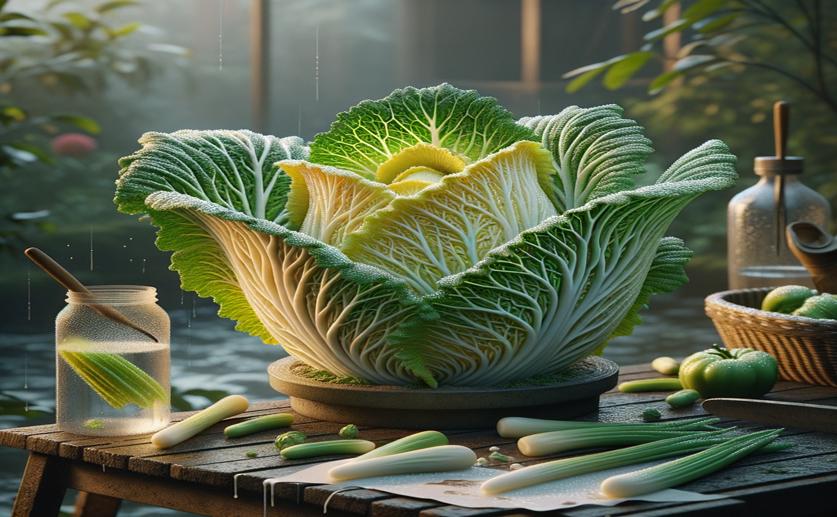
Mutation Leads to Less Wax on Chinese Cabbage Leaves
Greg Howard
10th May, 2024

Image Source: Natural Science News, 2024
Key Findings
- Scientists found a gene in Chinese cabbage that causes glossy leaves
- The glossy trait is due to a mutation affecting wax production on leaves
- This discovery could help breed cabbages that are both pretty and hardy
VegetablesGeneticsPlant Science
References
Main Study
1) BrBCAT1 mutation resulted in deficiency of epicuticular wax crystal in Chinese cabbage.
Published 9th May, 2024
https://doi.org/10.1007/s00122-024-04632-x
Related Studies
2) Increased Cuticle Waxes by Overexpression of WSD1 Improves Osmotic Stress Tolerance in Arabidopsis thaliana and Camelina sativa.
3) Reconstitution of plant alkane biosynthesis in yeast demonstrates that Arabidopsis ECERIFERUM1 and ECERIFERUM3 are core components of a very-long-chain alkane synthesis complex.
4) Branched-Chain Amino Acid Metabolism in Arabidopsis thaliana.
5) Structure and Biosynthesis of Branched Wax Compounds on Wild Type and Wax Biosynthesis Mutants of Arabidopsis thaliana.



 3rd March, 2024 | Jenn Hoskins
3rd March, 2024 | Jenn Hoskins